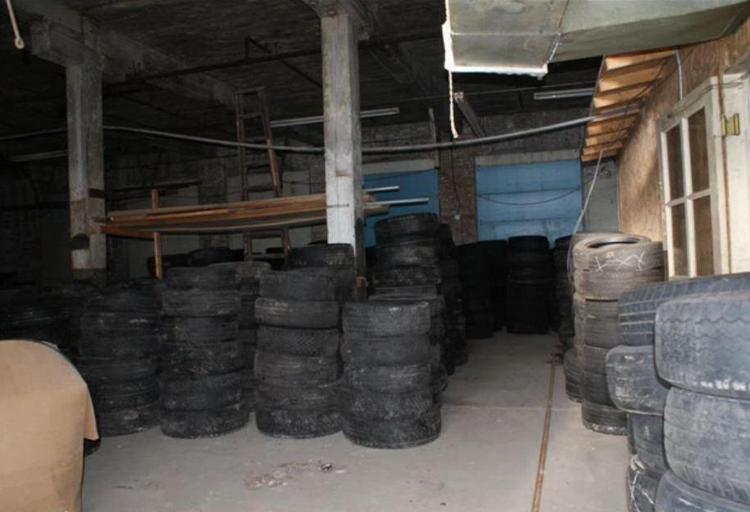MAKE A MEME
View Large Image

| View Original: | Toxic_Ghost_Town_Amsterdam_New_York.jpg (914x624) | |||
| Download: | Original | Medium | Small | Thumb |
| Courtesy of: | www.flickr.com | More Like This | ||
| Keywords: small business big heart amsterdam n.y. ny new york ghost town ghosttown dead city upstate real-estate realestate abandoned toxic hazardous waste rape sex offenders stupid criminal real estate mohawk valley mall 12010 blacks african americans capitol region albany schenectady troy You’re not supposed to look in there! abandoned tires in an abandoned warehouse. Rubber tires are typically classified by some states as "hazardous waste." Other states refer to them as "special waste." Many different toxic additives and chemicals are used to produce rubber tires. Among these toxins are cadmium, chromium, aluminum, copper, sulfur and zinc. Other harmful chemicals found in tires are benzene, phthalates, butylated hydroxyanisole, 3-phenyl and latex. As the rubber tires degrade these chemicals will leach into the ground. When old tires are heated by the sun or summer temperatures in un-air-conditioned buildings, it gives off toxic gases. Two of these gases are VOCs (volatile organic compounds) and PAHs (polyaromatic hydrocarbons). These gases cause irritation and inflammation of the nasal passages and the respiratory system. Toxic gases that are released can also cause depression, headaches, nausea, dizziness and eye and kidney damage. The types of chemicals used to make rubber tires are suspected to be toxic to the developmental, reproductive, endocrine and central nervous systems. Long-term exposure may lead to more serious conditions such as cancer. A Superfund site is any land in the United States that has been contaminated by hazardous waste and identified by the Environmental Protection Agency (EPA) as an imminent risk to human health and/or the environment. There are 58 such sites in the Greater Amsterdam New York area and 8 within the City of Amsterdam New York limits. There are many other hazardous waste sites that fall just underneath the hazardous waste (EPA) guidelines so the actual count of toxic sites is much higher. You’re not supposed to look in there! abandoned tires in an abandoned warehouse. Rubber tires are typically classified by some states as "hazardous waste." Other states refer to them as "special waste." Many different toxic additives and chemicals are used to produce rubber tires. Among these toxins are cadmium, chromium, aluminum, copper, sulfur and zinc. Other harmful chemicals found in tires are benzene, phthalates, butylated hydroxyanisole, 3-phenyl and latex. As the rubber tires degrade these chemicals will leach into the ground. When old tires are heated by the sun or summer temperatures in un-air-conditioned buildings, it gives off toxic gases. Two of these gases are VOCs (volatile organic compounds) and PAHs (polyaromatic hydrocarbons). These gases cause irritation and inflammation of the nasal passages and the respiratory system. Toxic gases that are released can also cause depression, headaches, nausea, dizziness and eye and kidney damage. The types of chemicals used to make rubber tires are suspected to be toxic to the developmental, reproductive, endocrine and central nervous systems. Long-term exposure may lead to more serious conditions such as cancer. A Superfund site is any land in the United States that has been contaminated by hazardous waste and identified by the Environmental Protection Agency (EPA) as an imminent risk to human health and/or the environment. There are 58 such sites in the Greater Amsterdam New York area and 8 within the City of Amsterdam New York limits. There are many other hazardous waste sites that fall just underneath the hazardous waste (EPA) guidelines so the actual count of toxic sites is much higher. | ||||